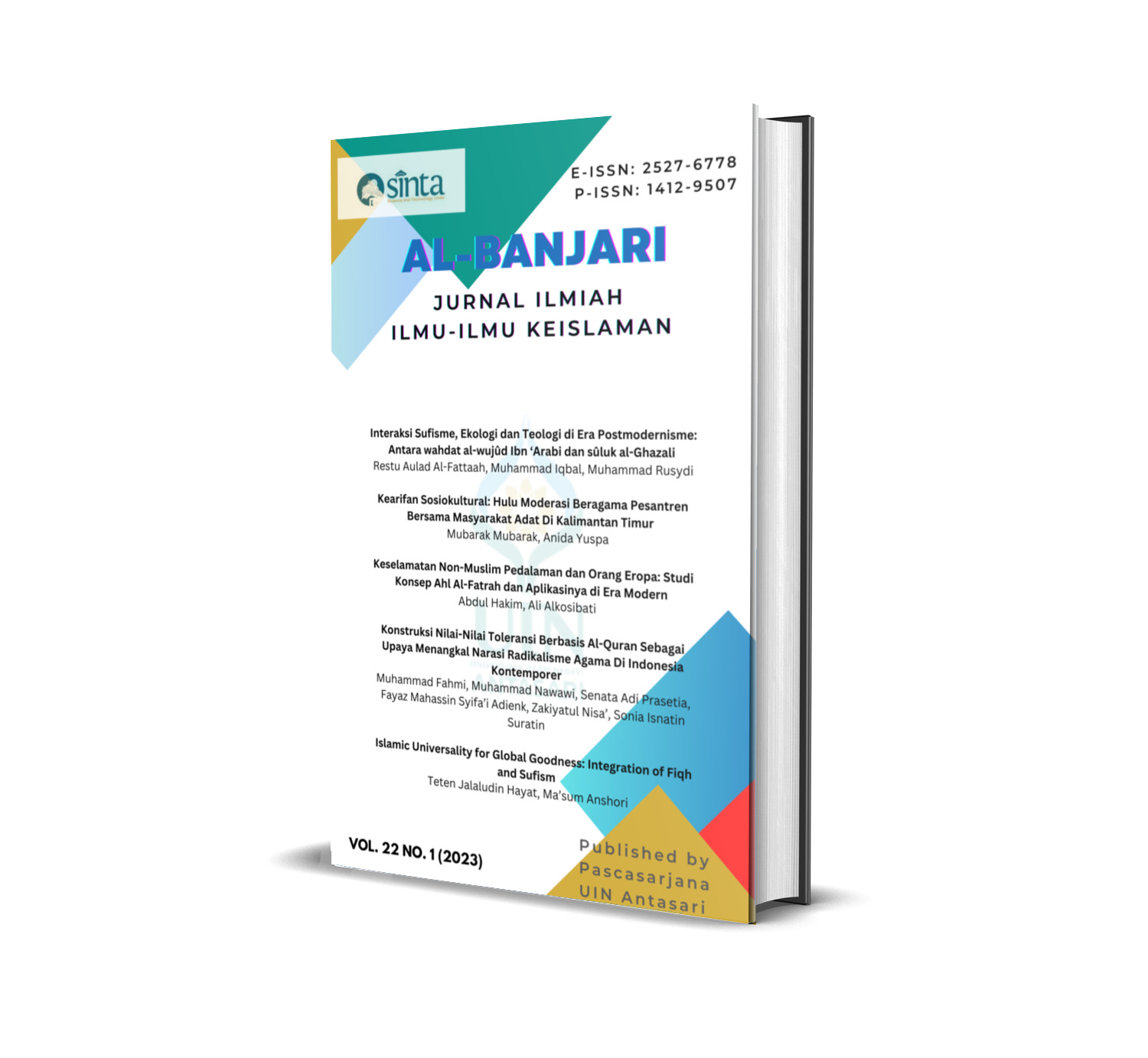Changes In Banjar Local And Islamic Culture In South Kalimantan's Typical Gems Draining Activities
DOI:
https://doi.org/10.18592/albanjari.v22i2.12401Abstract
South Kalimantan is not only rich in natural resources, but also rich in culture and religious values. This study aims to describe the local cultural traditions and Islam associated with the activity of "diamond" gemstone panning, which is one of the natural resources of South Kalimantan, as well as to examine the cultural changes in the diamond panning tradition. The research method used is a qualitative ethnographic method. Data analysis from observations, interviews and documents from diamond panners was conducted using Miles and Huberman's interactive model. The results showed that the local and Islamic cultures of the Banjar people were found before panning, during panning and after panning diamonds. Local culture such as visiting thieves, maintaining abstinence and speech (pamandiran) and Islamic culture such as visiting the pious, reading prayers, reading shalawat, faith, patience and tawakkal. Some of these traditions have changed, especially in the local culture, including the tools used for panning. Social change in panning activities is an evolutionary change where the shift in cultural traditions occurs slowly to adapt to internal and external factors so that the balance of the social system is maintained where malim, pious people, bosses/capital owners, panners perform their duties according to to their functions for the sustainability of panning activities. Keywords:Local culture, Islamic culture, diamond panning, social changeDownloads
Published
2024-02-29
Issue
Section
Articles
License

This work is licensed under a Creative Commons Attribution-ShareAlike 4.0 International License.
Authors who publish with this journal agree to the following terms:
- Authors retain copyright and grant the journal right of first publication with the work simultaneously licensed under a Creative Commons Attribution License that allows others to share the work with an acknowledgement of the work's authorship and initial publication in this journal.
- Authors are able to enter into separate, additional contractual arrangements for the non-exclusive distribution of the journal's published version of the work (e.g., post it to an institutional repository or publish it in a book), with an acknowledgement of its initial publication in this journal.
- Authors are permitted and encouraged to post their work online (e.g., in institutional repositories or on their website) prior to and during the submission process, as it can lead to productive exchanges, as well as earlier and greater citation of published work (See The Effect of Open Access).


































